Muslims in America: A forgotten history
For more than 300 years, Muslims have influenced the story of the US – from the ‘founding fathers’ to blues music today.
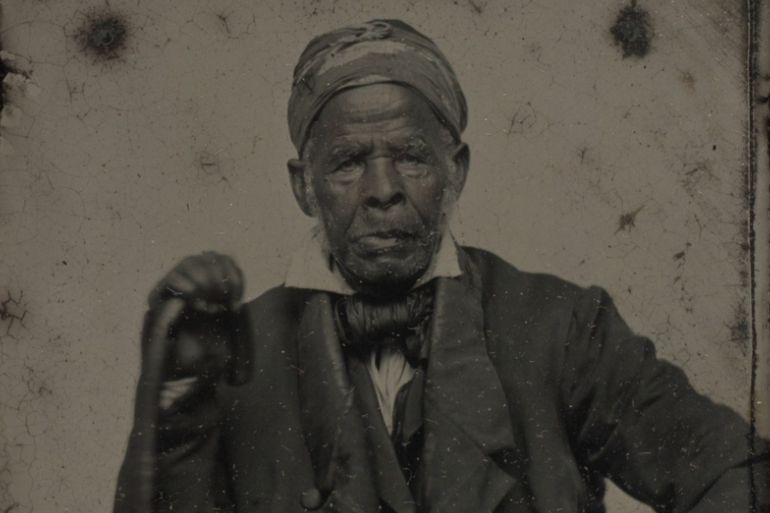
In the summer of 1863, newspapers in North Carolina announced the death of “a venerable African”, referred to, in a paternalistic manner, as “Uncle Moreau”.
Omar ibn Said, a Muslim, was born in 1770 in Senegal and by the time of his death, he had been enslaved for 56 years. In 2021, Omar, an opera about his life, will premiere at the Spoleto Festival in Charleston, South Carolina.
Keep reading
list of 3 itemsKnow your history: Understanding racism in the US
Analysis: Toppling racist statues makes space for radical change
Muslims are usually thought of as 20th-century immigrants to the US, yet for well over three centuries, African Muslims like Omar were a familiar presence. They had grown up in Senegal, Mali, Guinea, Sierra Leone, Ghana, Benin and Nigeria where Islam was known since the 8th century and spread in the early 1000s.
Estimates vary, but they were at least 900,000 out of the 12.5 million Africans taken to the Americas. Among the 400,000 Africans who spent their lives enslaved in the United States, tens of thousands were Muslims.
Though they were a minority among the enslaved population, Muslims were acknowledged like no other community. Slaveholders, travellers, journalists, scholars, diplomats, writers, priests and missionaries wrote about them. Founder of Georgia James Oglethorpe, Presidents Thomas Jefferson and John Quincy Adams, Secretary of State Henry Clay, author of the US national anthem Francis Scott Key, and portraitist of the Founding Fathers Charles W Peale were acquainted with some of them.
Visible manifestations of faith
Part of the Muslims’ conspicuousness was due to their continued observance, whenever possible, of the most noticeable tenets of their religion. Prayer, the second pillar of Islam, was one of these visible manifestations of faith noted by enslaved and enslavers alike.
In his 1837 autobiography, Charles Ball, who escaped slavery, related in great detail the story of a man who prayed aloud five times a day in a language others did not understand. He added, “I knew several, who must have been, from what I have since learned, Mohamedans; though at that time, I had never learned of the religion of Mohamed.”
Charles Spalding Willy had this to say about Bilali from Guinea, enslaved by his grandfather on Sapelo Island, Georgia: “Three times each day he faced the East and called upon Allah.” He witnessed other “devout Mussulmans, who prayed to Allah morning, noon and evening.”
Yarrow Mamout, another highly visible Muslim, was taken from Guinea in 1752 when he was about 16. After 44 years of slavery, he was freed and bought a house in Washington, DC. Mamout was a kind of celebrity who was “often seen and heard in the streets singing Praises to God – and conversing with him,” stated noted artist Charles Willson Peale.
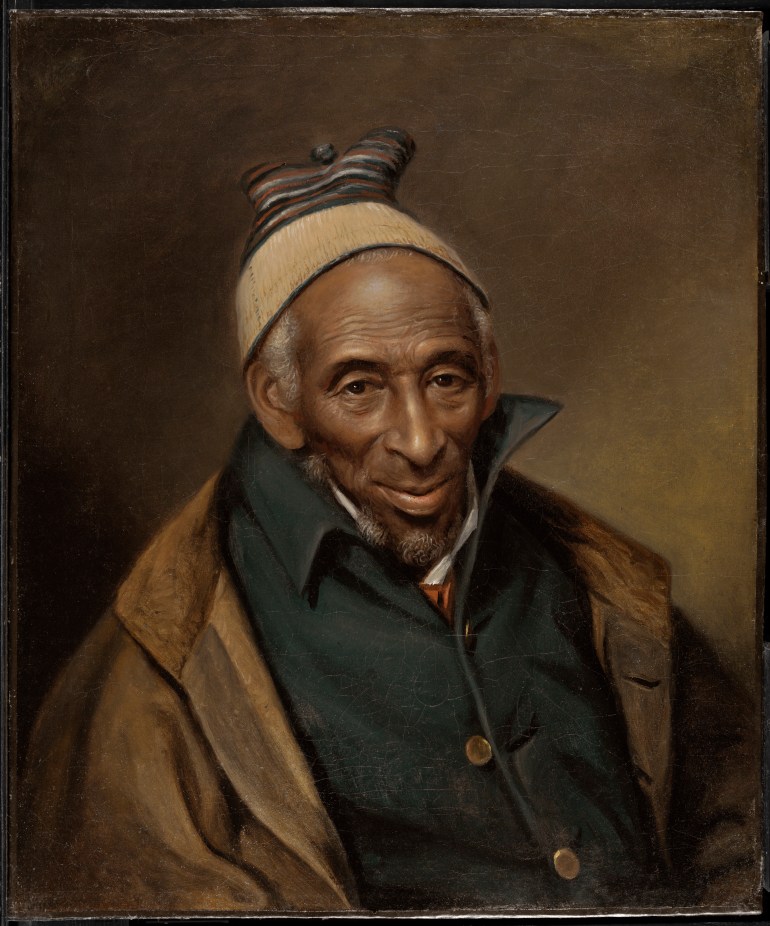
In the 1930s, men and women formerly enslaved in Georgia described how their relatives and others prayed several times a day: they knelt on mats, bowed, said strange words, and had “strings of beads” or misbahs. As Bilali pulled the beads, one descendant recalled, he said “Belambi, Hakabara, Mahamadu.”
It is hard to imagine how people in dismal poverty could give alms, the third pillar of Islam, but still, charity proved to be the most widespread and resilient of all the Muslims’ religious practices.
In the Sea Islands, the women left their mark on this tradition. In the 1930s, their descendants recalled with fondness the rice cakes their mothers gave to children. There was a word for it: Saraka, followed after the sharing by “Ameen, Ameen, Ameen.”
Rice cakes are the charity still offered by West African Muslim women on Fridays. The cake is not called saraka, but the act of giving is a sadaqa, a freewill offering, and that word is uttered as the women give it.
Reflecting the Muslims’ influence, non-Muslims all over the Caribbean to this day offer saraka, unaware of its Islamic origin.
Fasting and dietary requirements
There is no doubt that Islam’s fourth pillar, fasting, was exceedingly hard for people underfed and overworked. Nevertheless, Bilali and his large family used to fast during Ramadan. And so did his friend Salih Bilali. Abducted in Mali when he was about 14, 60 years later he was still “a strict Mahometan; [he] abstains from spirituous liquors, and keeps the various fasts, particularly that of the Rhamadan” wrote his “owner”, James Hamilton Couper.
Omar ibn Said was said to have fasted too. Others whose lives were not recorded may have used the same subterfuge as Muhammad Kaba in Jamaica: Whenever he had to fast, he pretended to be sick.
Several testimonies mention Islam’s dietary restrictions. Throughout his long life, Yarrow Mamout told people, “it is no good to eat Hog [and] drink whiskey is very bad.”
In Mississippi, the son of a prince acknowledged the difficulty of adhering to these rules since slaveholders provided the food. He said “in terms of bitter regret, that his situation as a slave in America, prevents him from obeying the dictates of his religion. He is under the necessity of eating pork but denies ever tasting any kind of spirits.”
In South Carolina, a man only known as Nero was more fortunate, he drew his ration in beef instead. By fasting and refusing certain food Muslims were not only remaining faithful to their religion, they were also asserting a degree of control over their lives.
Distinguished by their dress
In addition to respecting the tenets of Islam, Muslims distinguished themselves, when possible, by the way they dressed. In Georgia, some women wore veils while men sported Turkish fez or white turbans.
An 1859 article described how, each morning, Omar ibn Said nailed the end of a long strip of white cotton to a tree and, holding the other end, wrapped it around his head, fashioning a turban. Daguerreotypes show him with printed fabric around his head or a wool hat. In his portrait, painted in 1819 by Charles W Peale, Mamout wore the same kind of hat as Omar’s.
In 1733, the Senegalese Ayuba Suleyman Diallo insisted on being immortalised in his “country dress” with a white turban and a robe. Likewise, some Muslims in Trinidad, Brazil, and Cuba were described as wearing “flowing robes”, skullcaps and wide pants.
By short-circuiting the coarse, demeaning slave clothes, the Muslims who could do so were reclaiming a bit of ownership of their own bodies, while stating their fidelity to their religion.
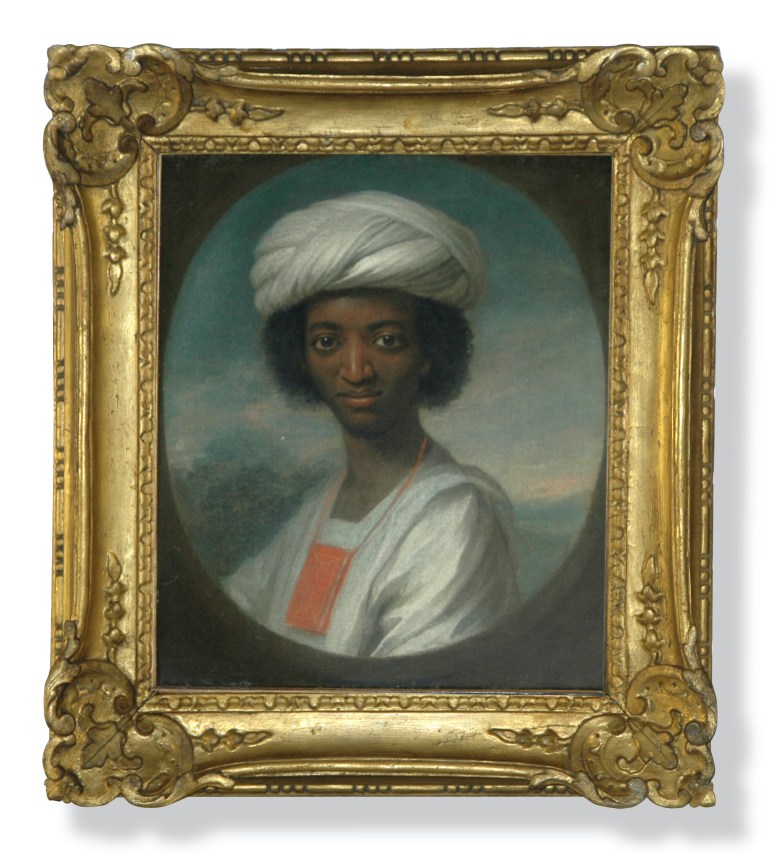
Curiosity and literacy
Besides being visible, Muslims generated much curiosity because of their literacy, an Islamic requirement because believers need to read the Quran.
This literacy was acquired in schools and, for the most educated, in local or foreign institutions of higher learning. This particularity set them apart from the non-Muslim Africans as well as many illiterate Americans, enslaved and free.
A slaveholder looking for a 30-year-old recent arrival listed only one characteristic in an 1805 runaway notice: he was a man “of grave countenance who writes the Arabic language”.
Two years later, Ira P Nash, a physician and land surveyor, brought to Thomas Jefferson’s attention – in three letters and one meeting – the tribulations of two Muslims. Captured in Kentucky, they escaped to Tennessee where they were jailed and escaped twice more. He gave Jefferson two pages they had written in Arabic. They included the last surah (chapter) of the Quran, al-Nas, Humanity, which speaks of refuge with Allah and evil, a perfect analogy to their situation.
Looking for a translation Jefferson sent the papers to scholar and abolitionist Robert Patterson. He thought the writings were about the men’s “history, as stated by themselves”.
Presumably, based on what that story would reveal, the president was willing to “procure the release of the men if proper”. However, their trace was lost before he could intervene.
Writing for fellow Muslims
Today, manuscripts, from Brazil and Panama to the Bahamas, Trinidad and Haiti still exist. Written by anonymous Muslims and a few known ones, they cover Quranic chapters, prayers, talismans, invocations, and admonitions for the Muslims to remain faithful to Islam. Several are linked to the 1835 Muslim uprising in Bahia.
In about 1823 Muhammad Kaba Saghanughu, who had been captured in 1777 on his way to Timbuktu and deported to Jamaica, wrote a 50-page document in Arabic. Addressed to the “community of Muslim men and women,” it is an instructional manual on praying, marriage and ablutions, and contains commentaries and references to classic Islamic texts.
In contrast to autobiographies by formerly enslaved people, including Africans such as Olaudah Equiano, the Muslims were writing for their own community, not a Western audience.
In the US, Bilali wrote a 13-page document, part of a work by the 10th-century Tunisian Ibn Abu Zayd al-Qairawani. It was written on paper produced in Italy for the North African market, which raises intriguing questions as to how he acquired it.
Salih Bilali, wrote his owner, “reads Arabic, and has a Koran (which however, I have not seen) in that language, but does not write it.” Similarly, Bilali who “kept all the plantation ‘Acts’ in Arabic … was buried with his Koran and praying sheep skin.”
These casual mentions of Qurans on remote plantations beg the question of where they got them. Perhaps, as other memorisers of the Quran did in the Americas, they wrote them themselves.
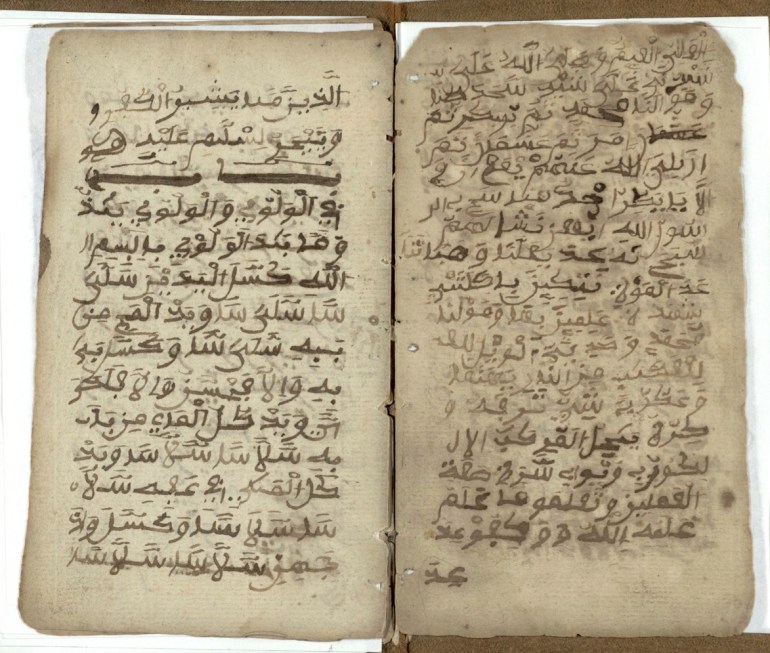
The Muslims who became famous were only a handful but many others, as accomplished, remained nameless.
William Brown Hodgson, a former diplomat posted in North Africa and a slaveholder, stated in 1857: “There have been several educated Mohammedan slaves imported into the United States.”
In 1845, he informed the French Société d’ethnologie that “a Foulah prince, named Omar, is presently a slave in the United States and will be able to procure precious elements for a detailed notice on his nation.”
Hodgson had tried to get information – probably for the same purpose – from Muslims but had to stop due to slaveholders’ hostility.
Similarly, Theodore Dwight, the secretary of the American Ethnological Society, observed in 1871 that several Africans in different parts of the country were literate and he had “obtained some information from some of them”.
Unfortunately, he too encountered “insuperable difficulties in the way in slave countries, arising from the jealousy of masters, and other causes.”
Writing for freedom
Ayuba Suleyman Diallo made the most of his literacy. A trader and Quranic teacher from the Islamic State of Bundu in Senegal, he was abducted in 1730 in Gambia and sold to captain Stephen Pike of the Arabella.
Diallo told him his father would pay for his freedom and he was allowed to dispatch an acquaintance to his hometown. But the Arabella left before Diallo could be freed.
From Maryland, he wrote a letter to his father and gave it to a slave dealer with instructions to remit it to Pike. The letter did not reach him but ended up in London in the hands of James Oglethorpe, the deputy governor of the Royal African Company and future founder of Georgia. After reading the translation, Oglethorpe arranged for Diallo’s release and transportation to England.
The Senegalese arrived in London in April 1733. He met the royal family and helped renowned physician and naturalist Sir Hans Sloane – whose private collection was the foundation of the British Museum, the British Library and the Natural History Museum – translate Arabic documents. Before returning to Bundu in July 1734, he posed for painter William Hoare and wrote three copies of the Quran from memory. One was sold in 2013 for 21,250 British pounds ($28,040) to the Dar El-Nimer Collection for Art & Culture in Beirut.
In Mississippi, Ibrahima abd al-Rahman followed in Diallo’s path with a letter he wrote in 1826. Thirty-eight years earlier the then 26-year-old son of the Muslim ruler of Futa Jallon in Guinea had been captured during a war. His letter was sent to Thomas Mullowny, the American consul in Morocco. He took it to Sultan Abd al-Rahman II, who asked for Ibrahima’s release. Secretary of State Henry Clay presented the case to President John Quincy Adams who devoted a passage to the matter in his diary on July 10, 1827.
After 39 years in Mississippi, Ibrahima was freed and left for Liberia in 1829 along with his American-born wife. He died shortly thereafter. Eight children and grandchildren were freed with the $3,500 he had raised for that purpose among abolitionists before leaving the US. They settled in Liberia, but seven relatives remained enslaved.
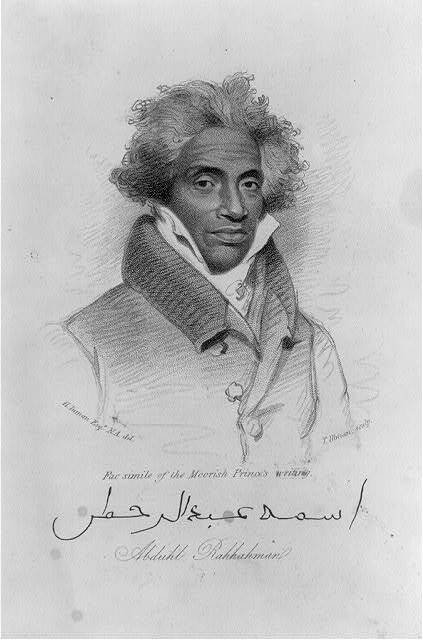
Challenging stereotypes
If his literacy didn’t free Omar ibn Said, it largely improved his situation. After he ran away in 1810 from an “evil man … an infidel who did not fear Allah”, Omar was captured as he prayed in a church and thrown in jail as a runaway. With pieces of coal, he covered the walls with pleas, in Arabic, to be released. The brother of a North Carolina governor bought him, gave him light tasks and furnished him with paper and Christian proselytisation.
Omar’s 1831 autobiography, written in Arabic, subtly denounced his enslavement with the help of Surat al-Mulk, which states that God has the power over all; in effect refuting his “owner’s” supremacy.
Professors Mbaye Bashir Lo at Duke and Carl Ernst at the University of North Carolina at Chapel Hill have closely analysed his 17 known manuscripts. They found that he quoted from memory from a variety of works, including one by a 12th-century Andalusian Sufi master and a 16th-century Egyptian theological poem.
Much was made of Omar’s alleged conversion to Christianity and Francis Scott Key helped procure him a Bible in Arabic. Omar also had a Quran, which was said to be his most precious possession. Tellingly, his last known manuscript, in 1857, was Surat al-Nasr (the Victory) as in the victory of Islam against the “unbelievers” and other enemies. This was the last surah revealed to the Prophet Muhammad.
To be sure, the stereotype of Africans as uncivilised idolaters used as justification for their enslavement did not align with literate, monotheist people. Therefore, Muslims were often misrepresented as Arabs, Moors, and “descendants of the Arabian Mahomedans who migrated to Western Africa”.
The American Colonization Society, whose objective was to deport free Black people to Liberia, envisioned freed Muslims, like Ibrahima, as a conduit to the “civilising” of the continent and, strangely enough, its Christianisation.
The blues
The imprint of enslaved African Muslims can still be seen today. Arabic terminology survives in the Gullah language of South Carolina, in Trinidadian and Peruvian songs, in the Caribbean saraka, and in a variety of religions such as Candomble, Umbanda and Macumba in Brazil, Vodun in Haiti, and Regla Lucumi and Palo Mayombe in Cuba.
Moreover, a significant Muslim contribution, the blues, has been acknowledged by major musicologists since the 1970s. The roots of the blues can be found in the field holler – a solo, non-instrumental, slow tune with elongated words, pauses, and melisma, all constitutive elements of the Islamic style of singing and reciting.
What musicologists did not recognise, however, is that the holler was a direct product not of the Muslims’ memories, but of Islamic practices that endured in the US such as prayers, the recitation of the Quran, Sufi chants, and the adhan, the call to prayer.
In particular, the closeness to the adhan of WD “Bama” Stewart’s “Levee Camp Holler”, recorded in 1947 at Parchman prison in Mississippi, is quite extraordinary. When both are juxtaposed, it is hard to tell when one ends and the other starts.
The blues is one of the most lasting and overlooked contributions of African Muslims to American culture.
Another might be the ring shout of the American South, Jamaica, and Trinidad. A religious rite during which people turn in a circle, it was thought to be an African dance with a perplexing name since there is no shouting. Another explanation was proposed in the 1940s. One tour around the Ka’ba is called a shawt, which sounds close to the word “shout” in English. Like the pilgrims do in Mecca, the American shouters turn counterclockwise around a sacred structure, such as the church, the altar, or a dedicated second altar. Could Muslims have “reinvented” the major episode of the Hajj?
A forgotten history
Over time, the story and even the presence of African Muslims in the Americas faded from memory. But since the tragedy of 9/11, there has been a growing interest in this forgotten history, a stunning discovery to most.
African American Muslims used it to claim an ancient lineage and immigrant communities to show that Islam, far from being foreign, was as American as Christianity.
Today, people in the wider Islamic world are increasingly interested in this international history of Islam.
As Africans and as Muslims, the people who lived their faith in the dreadful oppression of American slavery contributed to the social, religious and cultural fabric of this country. The Muslims’ legacy, acknowledged or not, lives on. Their story is an African story, a Muslim story, and an American story.